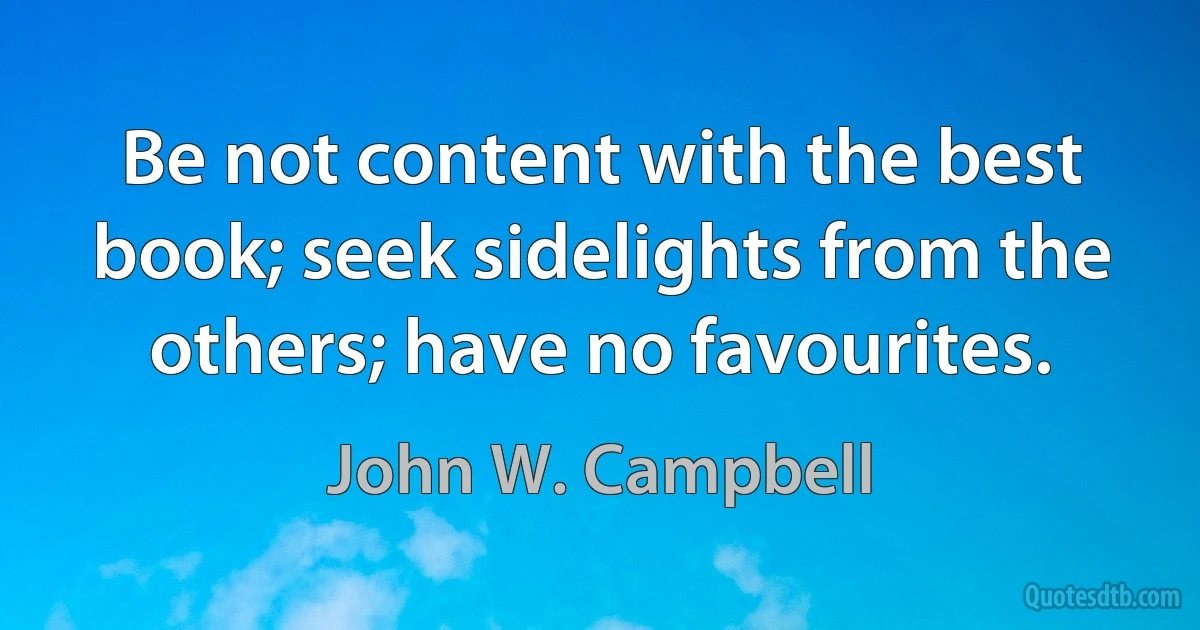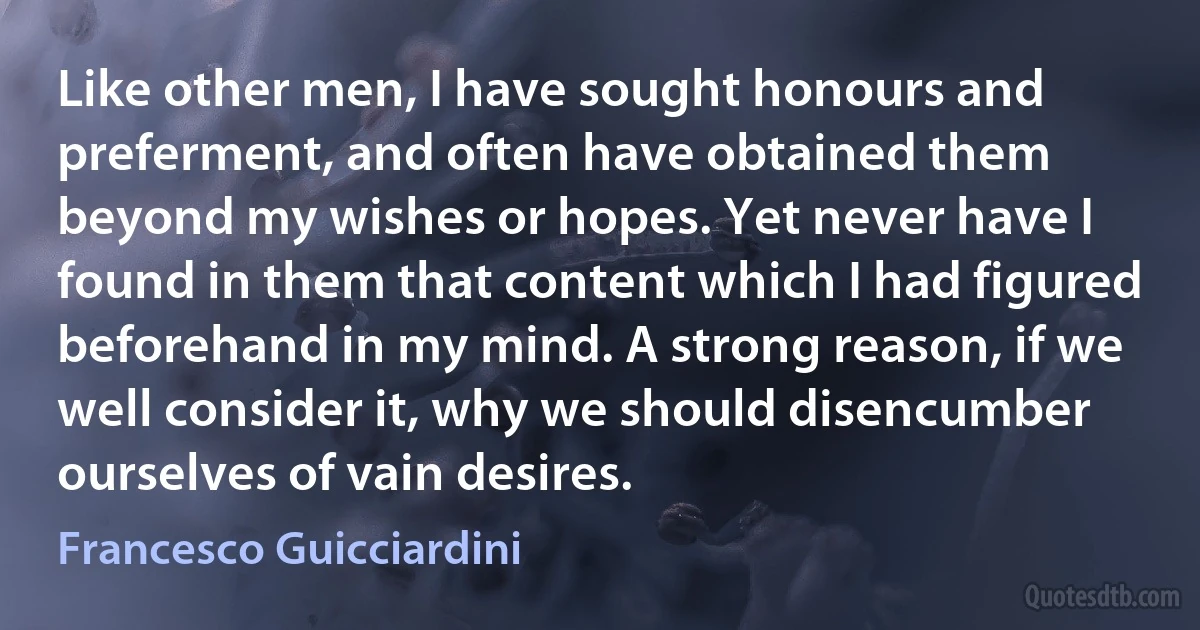Content Quotes - page 53
I am not thinking of those shining precepts which are the registered property of every school; that is to say - learn as much by writing as by reading; be not content with the best book; seek sidelights from the others; have no favourites; keep men and things apart; guard against the prestige of great names; see that your judgments are your own; and do not shrink from disagreement; no trusting without testing; be more severe to ideas than to actions; do not overlook the strength of the bad cause of the weakness of the good; never be surprised by the crumbling of an idol or the disclosure of a skeleton; judge talent at its best and character at its worst; suspect power more than vice, and study problems in preference to periods.

John W. Campbell
Formerly it frequently happened to me that when questioned regarding a picture I simply did not know what it represented. I had not seen the subject, so to say. Now I have also included the content so that I know most of the time what is represented. But this only supports my experience that what matters in the ultimate end is the abstract meaning of harmonization (note from a letter, 1903)

Paul Klee
Childish raptures! said Lucifer, with scorn, his eyes flashing like lightning. "Are we indeed whimpering and craven children, or slaves? Can we be content with toys and little deliciousnesses? Are we not mind, as well as emotion? And is not the mind, of both angel and man, the noblest of possessions, and worth exercising. It is in our minds that we approach the closest of Him, Who is all Mind. Mind is the creator of all philosophy, all order, all beauty, all satisfaction, but emotion is the lowliest of the virtues, if it is a virtue at all. Mind has in it the capacity to know all things, or, at least, the minds of angels.

Taylor Caldwell
All my life I have arrived early only to find myself standing self-consciously on a corner, outside a door, in an empty room, but the closer I get to death the earlier I arrive, the longer I am content to wait, perhaps to give myself the false sensation that there is too much time rather than not enough.

Nicole Krauss
Philosophy used to be a field that had content, but then 'natural philosophy' became physics, and physics has only continued to make inroads. Every time there's a leap in physics, it encroaches on these areas that philosophers have carefully sequestered away to themselves, and so then you have this natural resentment on the part of philosophers.

Lawrence M. Krauss
A new view of the role of art and science in cartography is clearly needed. It is probably a mistake to view maps as objects that contain varied amounts of scientific or artistic content for which we must determine an appropriate balance (as both Keates, 1984, and Robinson, 1952, seem to, with Keates arguing for more art and Robinson for more science). Instead, it makes more sense to consider complementary artistic and scientific approaches to studying and improving maps, both of which can be applied to any given cartographic problem. The artistic approach is intuitive and holistic, achieving improvements through experience supplemented by critical examination (where critical examination implies expert appraisal of the results of our cartographic decision-making efforts). It draws on science in using perspective, understanding of human vision, color theory, and so on.

Alan MacEachren



